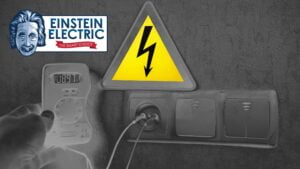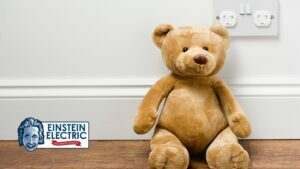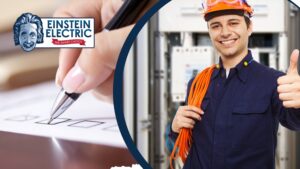Electric devices have become an integral part of our daily lives. From smartphones to laptops to home appliances, we rely on these devices to make our lives easier and more convenient. However, as with any technology, there are risks associated with using electric devices. In this blog, we will discuss some of the risks associated with electric devices and how you can minimize them.
Electrical shock
Electrical shock is one of the most common risks associated with electric devices. It can occur when you touch a live wire or come in contact with a damaged electrical device. Electrical shock can be mild or severe, depending on the voltage and current involved. In extreme cases, it can even be fatal.
Electrical shock is indeed one of the most common risks associated with electric devices and electrical systems. When you come into contact with an electric current, it can pass through your body, leading to an electrical shock.
The severity of an electrical shock depends on several factors, including the voltage and current of the electric source, the duration of the contact, the path the current takes through your body, and individual factors such as overall health and resistance to electric current.
Mild electrical shocks may cause a tingling sensation, minor pain, or muscle contractions. However, more severe shocks can result in burns, respiratory distress, cardiac arrest, and even death. The most critical factor in determining the severity of an electrical shock is the amount of current that passes through the body. Even low-voltage shocks can be dangerous if they pass through vital organs or if the current flow is sustained.
To minimize the risk of electrical shock, it’s important to follow safety precautions such as:
- Ensure that electrical installations and appliances are properly grounded.
- Inspect electrical cords and devices regularly for signs of damage or wear, and replace them if necessary.
- Use ground fault circuit interrupters (GFCIs) in areas where water is present, such as kitchens and bathrooms.
- Keep electrical devices away from water and moisture.
- Avoid using electrical devices with wet hands or in damp conditions.
- Never attempt to repair electrical devices or systems unless you are qualified to do so.
- When working with electricity, use insulated tools and wear appropriate personal protective equipment.
- Teach children about electrical safety and keep them away from electrical hazards.
- If someone sustains an electrical shock, immediately turn off the power source before touching them, or use a non-conductive object to separate them from the current. Call for medical help right away.
By following these safety measures and being aware of the potential risks, you can help minimize the likelihood of electrical shock and promote a safe electrical environment.
Fire hazard
Electric devices can also pose a fire hazard. This can happen if the device overheats, has a short circuit, or is used with the wrong type of power supply. In some cases, a faulty battery can also cause a device to catch fire.
To minimize the risk of a fire hazard, it is important to use your devices in a well-ventilated area and keep them away from flammable materials. Make sure your devices are not overheating and avoid overcharging them. If you notice any signs of damage or overheating, stop using the device immediately and have it checked by a professional.
electric devices can pose a fire hazard under certain circumstances. Here are some common scenarios where electrical devices can lead to fires:
- Overheating: When electrical devices operate for extended periods or under high loads without proper ventilation, they can overheat. This can cause components to melt, insulation to degrade, or flammable materials nearby to catch fire.
- Short circuits: A short circuit occurs when a low-resistance path is created between the positive and negative terminals of a power source. This can happen due to damaged wires, faulty connections, or internal component failures. The excessive current flow in a short circuit can generate heat, potentially leading to a fire.
- Incorrect power supply: Using an electric device with the wrong voltage or incompatible power supply can overload its electrical components. This can cause overheating and ultimately lead to a fire.
- Faulty batteries: Devices powered by batteries, such as smartphones, laptops, or electric vehicles, can experience battery malfunctions. This may include issues like overcharging, manufacturing defects, or physical damage to the battery. Faulty batteries can release flammable gases, overheat, or even explode, posing a significant fire hazard.
To minimize the risk of fire hazards associated with electric devices, consider the following precautions:
- Purchase devices from reputable manufacturers and ensure they meet safety standards.
- Avoid overloading electrical circuits and use surge protectors when necessary.
- Regularly inspect and maintain electrical devices for any signs of damage or wear, such as frayed cords or loose connections. Replace or repair damaged devices promptly.
- Follow manufacturer instructions regarding power supply, usage, and maintenance.
- Keep flammable materials away from heat sources and electrical devices.
- Use proper ventilation for devices that generate heat, such as computers or gaming consoles.
- Avoid leaving devices plugged in and unattended for extended periods, especially overnight or when leaving home.
- Dispose of batteries properly and avoid exposing them to extreme temperatures or physical damage.
- Install smoke detectors and fire extinguishers in your home or workplace and ensure they are in working condition.
Remember, fire safety is crucial when dealing with electrical devices. Taking preventive measures and being mindful of potential fire hazards can significantly reduce the risk of electrical fires and promote a safer environment.
Data security
Another risk associated with electric devices is data security. As we store more and more personal information on our devices, the risk of data theft and hacking increases. Cybercriminals can gain access to your device through malware, phishing attacks, or other tactics.
To minimize the risk of data security breaches, it is important to keep your devices updated with the latest security patches and use strong passwords. Avoid connecting to public Wi-Fi networks, as they are often not secure. Be wary of suspicious emails and messages and never click on links from unknown sources.
Data security is a significant concern in the digital age, and electric devices, such as computers, smartphones, and tablets, are vulnerable to various forms of data theft and hacking. Here are some key risks and measures to enhance data security:
- Malware: Malicious software, including viruses, worms, ransomware, and spyware, can compromise the security of your device and data. It is essential to use reliable antivirus and anti-malware software, keep them up to date, and regularly scan your devices for any potential threats.
- Phishing attacks: Phishing is a technique used by cybercriminals to deceive users into sharing sensitive information, such as passwords or credit card details, by posing as trustworthy entities. Be cautious of suspicious emails, messages, or websites requesting personal information and avoid clicking on unknown links. Verify the authenticity of requests before providing any sensitive data.
- Weak passwords: Weak or easily guessable passwords are an open invitation to unauthorized access. Create strong, unique passwords for each of your accounts and consider using a password manager to securely store and manage them.
- Unsecured Wi-Fi networks: Using public or unsecured Wi-Fi networks can expose your data to interception by hackers. Avoid accessing sensitive information or conducting financial transactions on untrusted networks. Instead, use secure and encrypted networks, such as virtual private networks (VPNs), when accessing the internet on the go.
- Software and system updates: Regularly update your device’s operating system, applications, and firmware to ensure you have the latest security patches. Software updates often address vulnerabilities that cybercriminals can exploit.
- Data encryption: Utilize encryption tools to secure sensitive data stored on your devices. Encryption scrambles your data, making it unreadable without the encryption key. Many operating systems and applications offer built-in encryption features.
- Backup your data: Regularly back up your important data to an external hard drive, cloud storage, or other secure backup solutions. In case of device theft, damage, or ransomware attacks, having backups ensures you can restore your data.
- Two-factor authentication (2FA): Enable two-factor authentication whenever possible. This adds an extra layer of security by requiring a secondary verification step, such as a unique code sent to your mobile device, in addition to your password.
- Physical security: Protect your devices physically by keeping them in a secure location, using screen locks, and enabling device tracking or remote wiping features in case of loss or theft.
- Educate yourself: Stay informed about the latest cybersecurity threats and best practices. Regularly educate yourself on emerging scams, techniques, and strategies cybercriminals use to gain unauthorized access.
By implementing these data security measures and staying vigilant, you can greatly reduce the risk of data theft, hacking, and other cyber threats associated with electric devices.
Electromagnetic radiation
Electromagnetic radiation is another risk associated with electric devices. This can come from the electromagnetic fields generated by the devices themselves or from the radiation emitted by Wi-Fi routers and cell towers. While the health risks associated with electromagnetic radiation are still being studied, some studies have linked exposure to certain types of cancer and other health problems.
To minimize the risk of exposure to electromagnetic radiation, it is important to use your devices at a safe distance and limit your exposure to Wi-Fi and cell phone radiation. Consider using a wired connection for your devices and using a headset or speakerphone when making calls.
Electromagnetic radiation refers to the energy released in the form of electromagnetic waves, which includes radio waves, microwaves, infrared radiation, visible light, ultraviolet radiation, X-rays, and gamma rays.
Here are some key points regarding electromagnetic radiation and its potential health risks:
- Electromagnetic fields (EMFs): Electric devices generate electromagnetic fields as they operate. These fields are generally categorized as extremely low frequency (ELF) fields or radiofrequency (RF) fields, depending on their frequency range. ELF fields are emitted by power lines, electrical wiring, and household appliances, while RF fields are associated with wireless communication devices such as Wi-Fi routers, cell phones, and cell towers.
- Health concerns: The health risks associated with electromagnetic radiation are still a subject of ongoing research and scientific debate. The majority of studies conducted so far have not found conclusive evidence linking exposure to electromagnetic radiation from electric devices or RF fields to adverse health effects.
- International guidelines and safety limits: Various organizations, such as the International Commission on Non-Ionizing Radiation Protection (ICNIRP) and the World Health Organization (WHO), have established guidelines and safety limits to ensure that public exposure to electromagnetic radiation remains within acceptable levels. These guidelines consider the potential health risks associated with different frequencies and intensities of electromagnetic radiation.
- Specific concerns and studies: Some studies have suggested potential associations between long-term exposure to electromagnetic radiation and certain health issues, including an increased risk of certain types of cancer (such as brain tumors) and other conditions like electromagnetic hypersensitivity. However, the overall scientific consensus is that these associations are weak and inconsistent, and more research is needed to establish causal relationships.
- Precautionary measures: As a precautionary approach, some individuals choose to minimize their exposure to electromagnetic radiation by maintaining distance from sources, using shielding materials, or reducing the time spent using certain devices. However, it’s important to note that the effectiveness of such measures in reducing health risks is still a topic of debate.
- Individual sensitivity: Some individuals may report symptoms they attribute to electromagnetic radiation exposure, known as electromagnetic hypersensitivity. However, rigorous scientific studies have not consistently demonstrated a causal relationship between electromagnetic radiation and the reported symptoms. It is essential to consult with medical professionals for proper evaluation and guidance if experiencing health concerns.
In conclusion, while concerns regarding electromagnetic radiation exist, current scientific evidence suggests that the risks associated with electromagnetic radiation from electric devices and RF fields are minimal when exposure is within established safety limits. As research continues, it is advisable to stay informed about the latest studies and follow any guidelines provided by reputable health and regulatory organizations.
Environmental impact
Finally, electric devices can also have a significant environmental impact. The production and disposal of these devices can result in the release of toxic chemicals and contribute to e-waste, which is a growing problem around the world.
To minimize the environmental impact of your electric devices, it is important to dispose of them properly. Many electronic retailers and manufacturers offer recycling programs for their products. You can also consider donating your old devices or selling them to a reputable refurbisher.
Electric devices can have a notable environmental impact throughout their lifecycle, including the production, use, and disposal stages. Here are some key points regarding the environmental impact of electric devices:
- Raw materials and manufacturing: The production of electric devices requires the extraction of raw materials, including metals, plastics, and rare-earth elements. The extraction and processing of these materials can lead to environmental degradation, habitat destruction, and the release of pollutants. Additionally, the manufacturing process consumes energy and water resources and generates greenhouse gas emissions.
- Energy consumption: During the use phase, electric devices consume energy, contributing to the demand for electricity. Depending on the energy sources used for electricity generation, the environmental impact can vary. Fossil fuel-based electricity generation releases greenhouse gases and contributes to climate change. Transitioning to renewable energy sources can help reduce the carbon footprint associated with device usage.
- E-waste: Electronic waste, or e-waste, is a significant environmental concern. When electric devices reach the end of their life or become obsolete, they are often discarded. Improper disposal and inadequate recycling of e-waste can result in the release of hazardous substances, such as lead, mercury, cadmium, and flame retardants, into the environment. These substances can contaminate soil, water, and air, posing risks to human health and ecosystems.
- Recycling and responsible disposal: Proper management of e-waste is crucial to mitigate its environmental impact. Recycling and responsible disposal of electric devices can help recover valuable materials, reduce the need for raw material extraction, and prevent the release of hazardous substances. Many countries and regions have established regulations and programs for the collection, recycling, and safe disposal of e-waste.
- Product lifespan and durability: Increasing the lifespan and durability of electric devices can help reduce their environmental impact. Designing devices for longevity, repairability, and upgradability can extend their useful life, reducing the need for frequent replacements. Manufacturers and consumers can support sustainable practices by opting for high-quality products and considering repair options before discarding devices.
- Circular economy approaches: Transitioning to a circular economy model can help mitigate the environmental impact of electric devices. This involves designing products for reuse, refurbishment, and recycling, as well as promoting the use of recycled materials in manufacturing. By closing the material loop and minimizing waste generation, the circular economy approach aims to reduce resource consumption and environmental pollution.
To address the environmental impact of electric devices, individuals, manufacturers, and policymakers can take several actions:
- Opt for energy-efficient devices and use them efficiently.
- Extend the lifespan of devices through proper maintenance and repairs.
- Donate or sell usable devices for reuse.
- Recycle e-waste through designated collection centers or programs.
- Support initiatives that promote responsible e-waste management and recycling.
- Advocate for eco-design and sustainable manufacturing practices.
- Promote energy transition towards renewable sources for electricity generation.
By adopting these measures, we can collectively work towards minimizing the environmental impact of electric devices and creating a more sustainable future.
In conclusion, electric devices offer many benefits, but they also come with certain risks. By following these guidelines, you can minimize these risks and enjoy your devices safely and responsibly. Remember to always use your devices in a well-ventilated area, keep them away from water and flammable materials, and take steps to protect your personal data.























